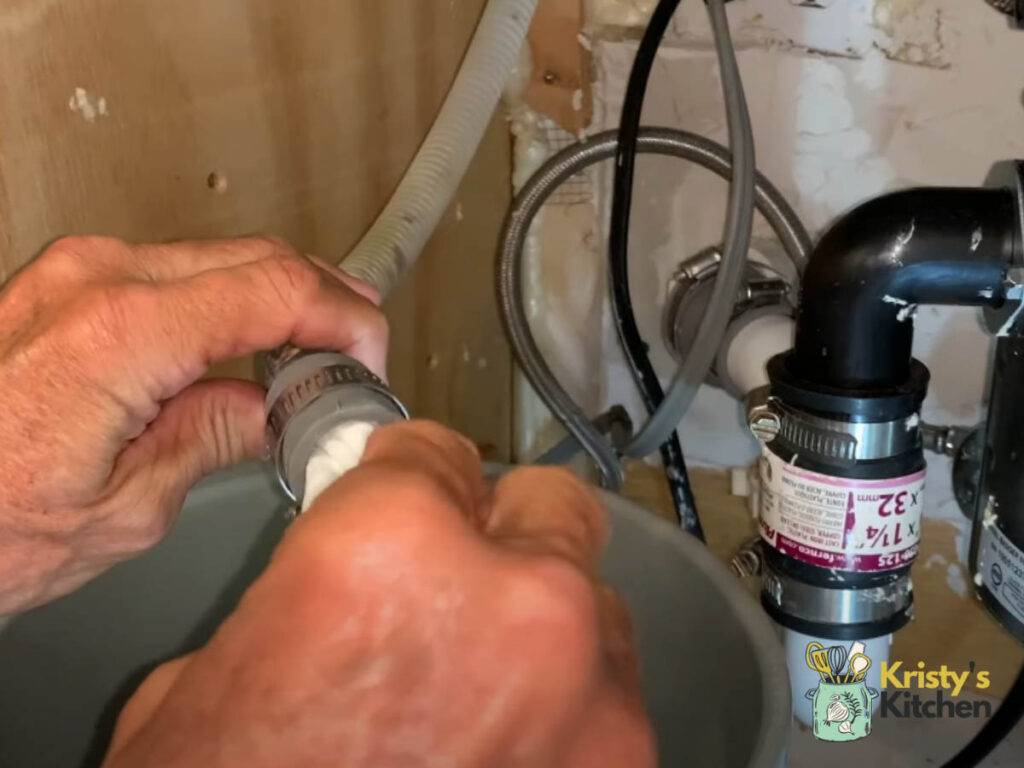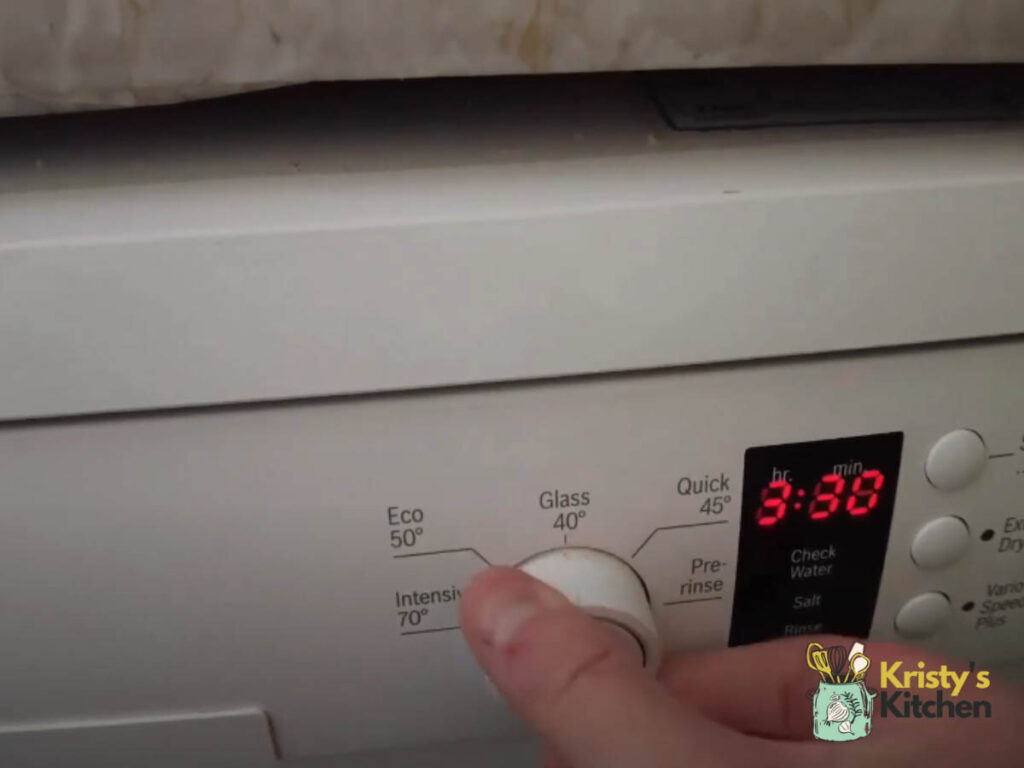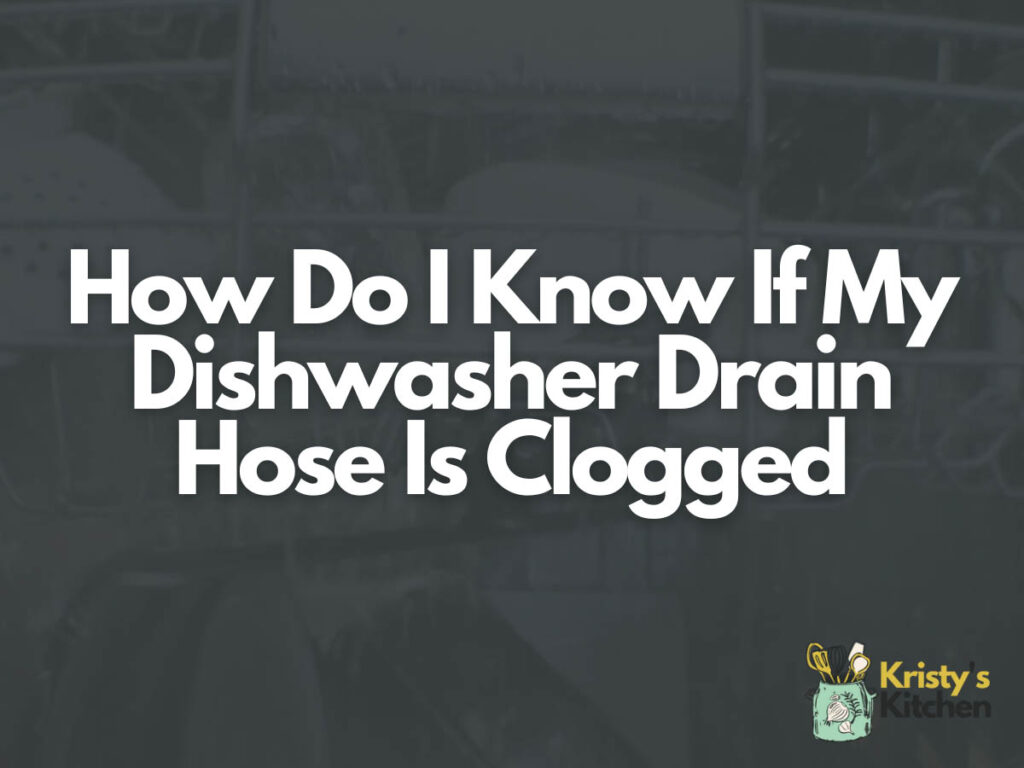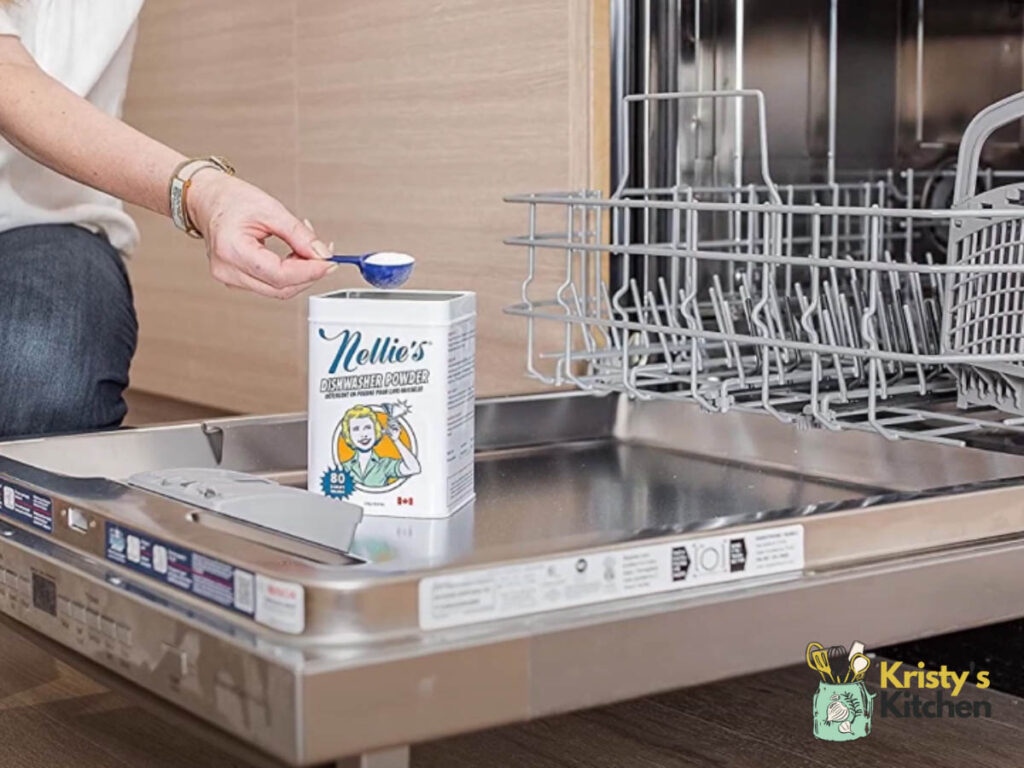How To Clean Dishwasher Drain Hose Without Removing It?
Ever had that moment after a satisfying meal when you go to load the dishwasher, and something’s just not right?
The water isn’t draining properly, and there’s a funky smell in the kitchen.
Chances are, it’s a clogged dishwasher drain hose causing the trouble.
But here’s the good news: You don’t need to be a plumbing pro to sort it out.
I’m here to tell you how to unclog a dishwasher drain hose, and it’s easier than you might think.
You’ll just need to get some baking soda, vinegar and some determination to get your hands dirty to clean the dishwasher drain hose without removing it.
Keep reading to learn more about the whole thing.
What Causes Dishwasher Drain Hose To Clog?

The drain hose clogging up happens in even the most advanced dishwashers – in fact, it’s one of the main reasons for a Bosch dishwasher not draining.
So, why does it happen? Let’s talk about the causes.
Reason 1: Grease and Food Particles
This is the most common reason that leaves most dishwashers struggling with drainage.
Leftover food scraps, harmless as they may seem, can cause problems.
When your dishwasher operates, it washes away grease, oils, and food particles down the drain hose.
Over time, these leftovers build up, creating a sticky mixture that lines the hose’s walls.
This buildup narrows the hose, making it difficult for water to flow freely.
The issue doesn’t stop there. The fats in the residue can solidify, becoming a breeding ground for bacteria and mold.
This leads to unpleasant odors and contributes to clogs.
Reason 2: Soap Scum and Mineral Buildup
When you set your dishwasher in motion, it sends a blend of water, detergent, and minerals down the drain hose.
While these elements excel at tackling your dish-cleaning tasks, they can also bring about issues in the long run.
As the water vanishes, minerals and soap remnants are left behind, building up a layer along the inner walls of the drain hose.
This build-up thickens over time, leading to decreased water flow.
The result? Sluggish drainage and the possibility of water pooling at the bottom of your dishwasher.
Reason 3: Debris and Small Objects
Discovering unexpected items in your dishwasher can be quite a surprise, right?
You might have come across toothpicks, seeds, bits of plastic, or even a stray utensil that somehow sneaked in during loading.
While these might seem harmless, they’re actually quite adept at creating havoc.
These little intruders can easily find their way into the drain hose and get lodged in those tight nooks and crannies.
As a result, you end up with troublesome blockages that impede the smooth drainage process.
How to Clean Your Dishwasher Drain Hose Without Removing It

So, how do you get all these things out of your drain?
Let me give you a thorough rundown.
Step 1: Gather Your Supplies
Let’s start by collecting what you need.
You’ll want a cup of white vinegar, about a cup of baking soda, a brush with a long handle and a bucket.
Oh, and don’t forget the gloves, so you stay clean and don’t feel bothered by the ick.
Step 2: Prep Your Dishwasher
Empty the dishwasher and take out the bottom rack.
This gives you access to the drain basket – the part that catches debris and can lead to clogs.
Step 3: Starting the Cleaning Process
Now it’s time for some vinegar and baking soda magic.
Put a container with a cup of white vinegar on the top rack – make sure it’s dishwasher-safe.
Sprinkle about a cup of baking soda evenly on the bottom of the dishwasher.
Step 4: Run a Cleaning Cycle

Choose the hottest water setting on your dishwasher and start a short cycle.
The vinegar works to break down grease, while the baking soda tackles mineral buildup.
This cycle usually lasts around 15-20 minutes.
Step 5: Finish with a Rinse
Once the cycle is done, run another short cycle with just water.
This final rinse flushes away any remaining vinegar and baking soda.
Again, the cycle should last around 15-20 minutes. Keep an eye on the cycle timer to gauge its progress.
Step 6: Scrub the Drain Basket
Lastly, take your long-handled brush and gently scrub the drain basket.
This helps dislodge any lingering debris that might be hanging around.
How Often Should I Clean Dishwasher Drain Hose?
Well, as they say – consistency is key. Aim to clean the drain hose every three to six months, depending on how frequently you use your dishwasher.
This practice helps maintain optimal performance and prevents potential problems down the line.
How Do I Know If My Dishwasher Drain Hose Is Clogged?

Here are a couple of signs that can help you figure out if your drain hose currently needs cleaning:
- Slow Draining: If you notice that water is taking longer than usual to drain from your dishwasher, it’s a clear indicator that the drain hose might be clogged.
- Water Pooling at the Bottom: When you open your dishwasher after a cycle and find a pool of water at the bottom, it’s time to give the drain hose some attention.
- Unpleasant Odors: Foul odors emanating from your dishwasher can be a sign of debris buildup in the drain hose. Cleaning it can freshen up the appliance.
- Inefficient Cleaning: If your dishwasher isn’t cleaning your dishes as effectively as before, it could be due to poor drainage caused by a clogged hose.
- Odd Noises: Unusual noises during the dishwasher’s operation, such as gurgling or humming, can be attributed to restricted water flow caused by a clogged drain hose.
Tricks To Keep The Dishwasher Drain Hose Clogg Free

- Scrape Your Dishes: Before loading your dishes, give them a quick scrape to remove any food bits. This helps avoid bigger pieces clogging the hose.
- Use the Garbage Disposal: If you have one, run your garbage disposal before starting the dishwasher. It helps get rid of food scraps that could block the hose.
- Clean the Drain Basket: Every now and then, take a look at and clean the dishwasher’s drain basket. It’s the first defense against junk getting into the drain hose. A clean basket means fewer clogs.
- Use Good Dishwasher Soap: Invest in a decent dishwasher detergent. Good soap helps stop scum and minerals from clogging up the drain hose.
- Check for Foreign Objects: Before starting the dishwasher, take a quick look inside for anything that shouldn’t be there, like utensils or small stuff. Removing these can stop clogs before they happen.
- Run Hot Water First: Turn on the hot water at your kitchen sink until it gets hot before you start the dishwasher. This helps melt grease and stops buildup in the drain hose.
- Regular Check-Ups: Every now and then, give your dishwasher a once-over. Look for any damage or problems and fix them early to avoid future drain hose issues.
FAQs
How do you prevent backflow on dishwasher drain hose?
Install an air gap or make a high loop in the drain line to stop water from flowing back into the dishwasher.
Should there always be water in dishwasher drain hose?
No, there shouldn’t be water in the drain hose when the dishwasher isn’t running. It should be empty.
Final Thoughts
Now you’re on your way to a kitchen that smells as fresh as a daisy, thanks to a clean dishwasher drain hose.
Remember, the maintenance routine I gave is your secret weapon against unpleasant odors and drainage problems.
Keep it up, and you’ll enjoy a consistently good dishwasher.
